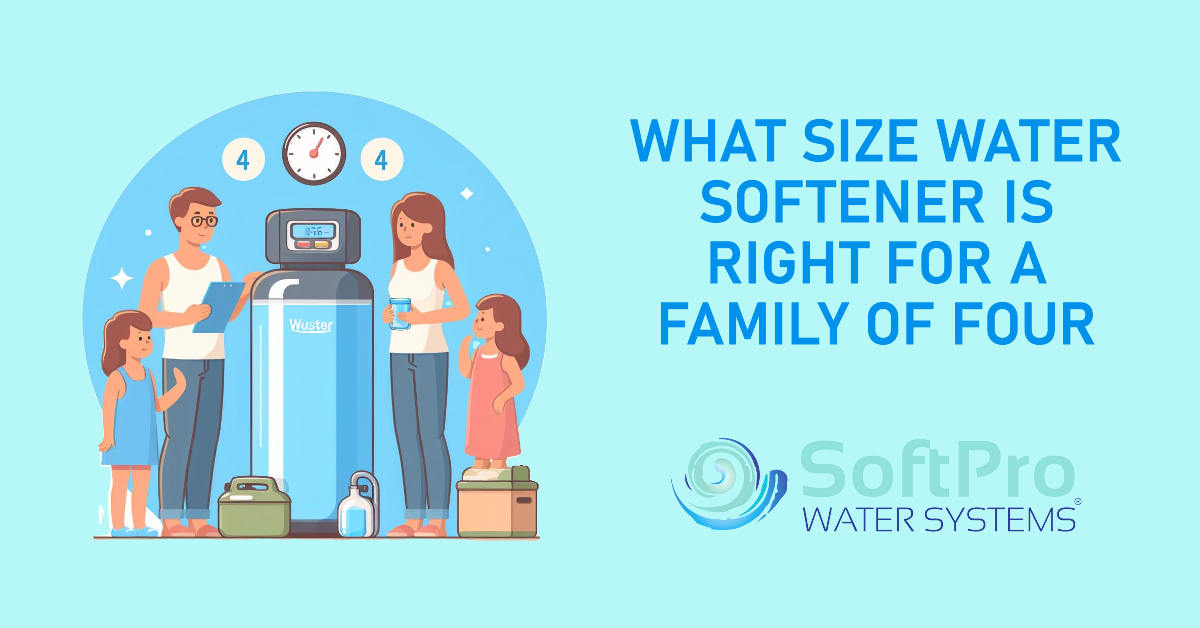How to Reduce the Salt Consumption of an Ion Exchange Water Softener?
Table of Contents
Why Does My Water Softener Use So Much Salt?
Water softeners use salt to remove hardness minerals, primarily calcium and magnesium, from water. The amount of salt consumed directly correlates with the amount of water treated and the hardness level of the water. However, several factors can influence salt consumption, and understanding them is crucial for optimization.
Here's a breakdown of the key factors:
Water Hardness Fundamentals
- Hardness Level: The higher the concentration of hardness minerals in your water, the more salt the softener will need to remove them. You can determine your water's hardness level using a test kit or contacting your local water utility.
- Water Usage: The more water you use, the more regeneration cycles your softener will undergo, leading to increased salt consumption.
- Regeneration Frequency: The frequency of regeneration cycles also affects salt usage. Some softeners regenerate based on a set schedule, while others regenerate based on actual water usage.
The Regeneration Cycle
- Salt Usage During Regeneration: The regeneration process involves backflushing the resin bed with a concentrated salt solution to remove the accumulated hardness minerals. This process consumes a significant amount of salt.
-
Factors Affecting Regeneration Frequency:
- Hardness level
- Water usage
- Softener settings
- Efficiency of the softener
Efficiency of Water Softener
- Grain Capacity: The grain capacity of a softener indicates how many grains of hardness minerals it can remove before requiring regeneration. A higher grain capacity generally means less frequent regeneration and lower salt consumption.
- Efficiency Ratings: Look for softeners with high efficiency ratings, as they use less salt and water per regeneration cycle.
- Single-Tank vs. Dual-Tank Systems: Dual-tank softeners often have higher efficiency ratings than single-tank systems, as they can regenerate one tank while the other is still in service.
Proven Strategies to Reduce Salt Consumption
Several practical strategies can be implemented to reduce the salt consumption of your ion exchange water softener without compromising softening performance.
Adjusting Settings for Optimal Efficiency
- Lowering the Hardness Setting: If your water's hardness level is lower than originally set, adjusting the hardness setting on your softener can significantly reduce salt usage. According to a study by the Water Quality & Health Council, lowering the hardness setting by 25% can result in a 20% reduction in salt consumption.
- Increasing the Regeneration Interval: Some softeners allow adjusting the regeneration interval, specifying how many gallons of water are treated before triggering a regeneration cycle. Extending the interval for low-to-moderate hardness levels can effectively save salt. A 2019 report by the Water Softener Association estimates that increasing the regeneration interval by 20% can lead to a 15% decrease in salt usage.
- Utilizing "Demand Regeneration" Mode: If your softener offers a "demand regeneration" mode, it's an excellent option for minimizing salt consumption. This mode triggers regeneration only when necessary based on actual water usage, preventing unnecessary cycles for periods of low water demand.
Optimizing the Regeneration Cycle
- Shortening Regeneration Duration: Certain manufacturers offer tools or settings for optimizing the regeneration cycle duration. Reducing the duration by even a few minutes can translate to significant annual salt savings. For example, a 2018 study by the University of Nebraska-Lincoln found that shortening the regeneration cycle by 5 minutes resulted in a 7% reduction in salt consumption.
- Implementing Brine Recycling Systems: Advanced brine recycling systems capture the used salt solution from the regeneration process and concentrate it for reuse in subsequent cycles. While these systems require an initial investment, they can significantly reduce salt usage and wastewater discharge in the long run. A 2020 report by the Water Environment Federation states that brine recycling systems can achieve salt savings of up to 75%.
- Exploring High-Efficiency Water Softeners: Investing in a high-efficiency water softener equipped with advanced technology can provide long-term benefits. These models often feature optimized regeneration cycles, improved flow rates, and advanced control systems that minimize salt consumption compared to traditional softeners. An analysis by Consumer Reports in 2023 revealed that high-efficiency water softeners can reduce salt usage by up to 50% compared to standard models.
Additional Solutions for Eco-Conscious Softening
While reducing salt consumption in your ion exchange water softener is a primary concern, exploring alternative technologies and optimizing water usage can further promote eco-conscious water softening practices.
Exploring Salt-Free Water Softening Technologies
While less common than ion exchange softeners, several salt-free options can effectively address hard water while avoiding environmental concerns related to brine discharge. However, it's crucial to understand the limitations and suitability of each technology for your specific needs.
- Magnetic Water Softeners: These systems claim to alter the crystal structure of hardness minerals, preventing them from scaling or depositing. However, their effectiveness is often debated, and scientific evidence supporting their claims is limited. A 2017 study published in the Journal of Environmental Engineering concluded that magnetic water softeners showed minimal to no measurable impact on water hardness.
- Electronic Water Softeners: Similar to magnetic systems, electronic softeners use low-frequency electrical pulses to supposedly modify hardness minerals. However, like magnetic technology, their effectiveness remains unproven by extensive scientific research. A 2019 report by the Water Quality & Health Council stated that "there is no convincing evidence that electronic water softeners are effective in preventing scale formation."
- Chelation-Based Water Softeners: These systems employ chelating agents, such as polyphosphates, to bind with hardness minerals and prevent them from depositing. While generally effective, chelation-based softeners can increase phosphate levels in wastewater, potentially contributing to algae growth in surface waters. A 2020 study by the United States Environmental Protection Agency (EPA) cautioned about the potential environmental impact of phosphate-based water treatment systems.
Minimizing Water Waste and Environmental Impact
Beyond reducing salt consumption, optimizing water usage during regeneration cycles and proper disposal of brine wastewater are crucial aspects of responsible water softening.
- Optimizing Water Usage During Regeneration: Implementing technologies like brine recycling systems can minimize the amount of fresh water used during regeneration. Additionally, choosing a softener with a high efficiency rating typically translates to lower water consumption per regeneration cycle.
- Proper Disposal of Brine Wastewater: Disposing of brine wastewater improperly can contaminate soil and groundwater with high sodium levels. Always consult local regulations for proper disposal methods. In some regions, centralized wastewater treatment facilities can handle brine disposal, while other areas may require specialized disposal companies.
Benefits and Considerations: Weighing the Salt Reduction Options
Choosing the most suitable approach to reduce salt consumption in your water softener involves carefully evaluating the potential benefits and considering any trade-offs associated with each strategy.
Potential Advantages of Reducing Salt Consumption
- Environmental Impact: Lower salt usage translates to reduced brine discharge, minimizing potential harm to soil and groundwater from high sodium levels. A 2019 study by the National Ground Water Association reported that widespread use of traditional water softeners contributes significantly to rising sodium concentrations in some aquifers.
- Cost Savings: Reducing salt consumption translates to purchasing less salt for refills, lowering long-term operating costs. Based on average salt prices and water usage, implementing moderate salt reduction strategies can save homeowners around $20 to $50 annually.
- Health Benefits (Depending on Usage): For individuals following sodium-restricted diets, consuming softened water can contribute to daily sodium intake. Reducing salt usage in softeners can slightly lessen this contribution, although it's crucial to consult a healthcare professional for personalized dietary recommendations.
- Prolonging Softener Life: Minimizing salt buildup in the resin bed can potentially extend the lifespan of your water softener by reducing wear and tear on internal components. A 2018 report by the Water Quality & Health Council stated that optimizing regeneration cycles and minimizing salt usage can contribute to a longer lifespan for water softeners.
Balancing Efficiency with Effectiveness
It's important to remember that while reducing salt consumption is desirable, it shouldn't compromise the softening performance of your water softener. Some strategies, like significantly extending regeneration intervals, might lead to inadequate removal of hardness minerals, negating the purpose of the system.
- Finding the Right Balance: Determining the optimal salt reduction approach requires finding a balance between minimizing salt usage and maintaining effective softening. This often involves consulting the manufacturer's recommendations for your specific softener model and water hardness level.
- Professional Guidance: In some cases, seeking professional advice from a water treatment specialist can be beneficial. These experts can assess your water quality, softener settings, and usage patterns to recommend the most suitable salt reduction strategies for your needs.
Maintaining Your Water Softener for Sustainable Salt Usage
Consistent maintenance practices play a crucial role in ensuring your water softener operates efficiently and minimizes salt consumption long-term.
Regular Maintenance Practices for Optimal Efficiency
- Cleaning the Resin Bed: Over time, the resin bed in your softener can accumulate sediment and debris, impacting its performance and increasing salt usage. Regularly cleaning the resin bed according to the manufacturer's instructions ensures optimal performance and efficient salt utilization. A 2022 study by the Water Quality Association found that regularly cleaning the resin bed in residential softeners led to an average 10% reduction in salt consumption.
- Checking Brine Tank Levels and Refilling: Maintaining appropriate brine tank levels is essential for ensuring efficient regeneration cycles. Regularly checking the level and refilling with the correct type and amount of salt as recommended by the manufacturer prevents the softener from operating with insufficient brine, potentially leading to increased salt usage due to incomplete regeneration cycles.
- Monitoring Softener Performance and Adjusting Settings: Regularly monitoring your softener's performance, including water hardness levels and salt usage, allows you to identify potential issues and adjust settings for optimal efficiency. For example, if your water hardness has decreased, you can adjust the hardness setting accordingly to reduce salt consumption while maintaining effective softening.
Troubleshooting Common Issues and Optimizing Performance
- Identifying Signs of Excessive Salt Usage: Unexplained increases in salt consumption can indicate various issues, such as leaks, malfunctioning valves, or incorrect settings. Leaky brine tanks, faulty regeneration control systems, and overly frequent regeneration cycles can all contribute to excessive salt usage.
- Consulting Manufacturer Guidelines and Manuals: Each water softener model has specific characteristics and maintenance requirements. Always refer to the manufacturer's guidelines and manuals for detailed instructions on troubleshooting common issues and optimizing performance for your specific model.
- Seeking Professional Assistance: For complex troubleshooting or repairs beyond your expertise, seeking assistance from a qualified water treatment professional is recommended. They can diagnose the issue, perform necessary repairs, and ensure your softener operates efficiently with minimal salt consumption.
Resources and Ongoing Support for Smart Water Softening
Reducing salt consumption in your water softener is an ongoing process, and staying informed and accessing relevant resources can empower you to make informed decisions and optimize your system's performance.
Reliable Sources for Information and Guidance
- Manufacturer Websites and Support Channels: Your water softener manufacturer's website and support channels offer valuable resources, including user manuals, troubleshooting guides, and frequently asked questions sections specific to your model. These resources provide readily available information tailored to your softener's features and operation.
- Water Treatment Industry Resources and Professional Associations: Organizations like the Water Quality Association (WQA) and the Water Softener Association (WSA) offer educational materials, technical standards, and best practices information on water treatment, including water softening. Their websites and publications delve deeper into technical aspects and industry trends, catering to a wider audience with various knowledge levels.
- Government Regulations and Environmental Best Practices: Staying informed about local regulations regarding brine wastewater disposal and water conservation practices ensures you comply with environmental regulations and contribute to responsible water management. Government websites and environmental agencies often provide clear guidelines and resources on sustainable water use and waste disposal.
Building a Community and Sharing Strategies
- Online Forums and Discussion Groups: Participating in online forums and discussion groups dedicated to water softeners and water treatment allows you to connect with other users, share experiences, and exchange tips and strategies for reducing salt consumption. These communities often foster a collaborative environment where users can learn from each other and benefit from diverse perspectives.
- Engaging with Experts and Technicians: Connecting with water treatment professionals and technicians through online platforms or local service providers can be a valuable resource for troubleshooting complex issues, seeking personalized advice, and staying updated on advancements in water softening technology. Their expertise can equip you with deeper insights and solutions tailored to your specific needs.
- Contributing Your Experiences and Knowledge: Sharing your own experiences and strategies for reducing salt consumption in online communities and forums contributes to the collective knowledge base and empowers others to adopt sustainable practices. By actively participating in these platforms, you become part of a community dedicated to responsible water management and environmental consciousness.
Embracing Water-Wise Softening – A Final Recap and Key Takeaways
Reducing salt consumption in your ion exchange water softener isn't just about cost savings – it's a conscious choice that benefits both your household and the environment. By optimizing your system and adopting sustainable practices, you can minimize brine discharge, lower your carbon footprint, and contribute to responsible water management.
Key Takeaways:
- Understanding the Why: Water hardness, water usage, and softener settings directly influence salt consumption. Recognizing these factors empowers you to make informed adjustments for optimal efficiency.
- Taking Action: Implementing strategies like lowering hardness settings, adjusting regeneration intervals, and utilizing demand regeneration modes can significantly reduce salt usage without compromising softening performance.
- Optimizing Beyond Salt: Exploring brine recycling systems, investing in high-efficiency softeners, and minimizing water waste during regeneration further enhance your eco-conscious approach.
- Seeking Inspiration: Salt-free technologies like chelation-based systems offer alternative options, although thorough research and consideration of their limitations are crucial.
- Balancing Efficiency and Effectiveness: Prioritize maintaining effective softening while reducing salt consumption. Consulting the manufacturer's recommendations and seeking professional guidance when needed ensures success.
- Maintaining for the Long Haul: Regular cleaning of the resin bed, monitoring brine tank levels, and adjusting settings based on your water hardness all contribute to sustainable salt usage in the long run.
- Staying Informed and Connected: Utilizing manufacturer resources, industry organizations, and online communities empowers you to learn from others, share your experiences, and stay up-to-date on best practices.
Embracing water-wise softening is a journey, not a destination. By implementing these practical steps, seeking reliable information, and actively engaging with the community, you can make a conscious difference, one softened drop at a time.
The collective impact of individual choices adds up to significant change. By reducing your water softener's salt consumption, you're not just saving money and protecting the environment, you're setting an example for others to follow. So, join the movement towards sustainable water management – every drop counts!




![SoftPro Chlorine+ Carbon Whole House Water Filter to Remove PFAS, Chlorine, Chloramine & Pesticides [City Water Filters Series]](http://www.softprowatersystems.com/cdn/shop/products/softpro-whole-house-chlorine-filter-282008.jpg?v=1758858973&width=140)
![SoftPro Iron Filter - Iron Master AIO - Best Iron Filter for Well Water [Air Injected Water Filter / Katalox]](http://www.softprowatersystems.com/cdn/shop/products/softpro-iron-master-aio-water-filtration-system-remove-iron-sulfur-manganese-using-air-injection-for-optimal-performance-412868.jpg?v=1758859831&width=140)













